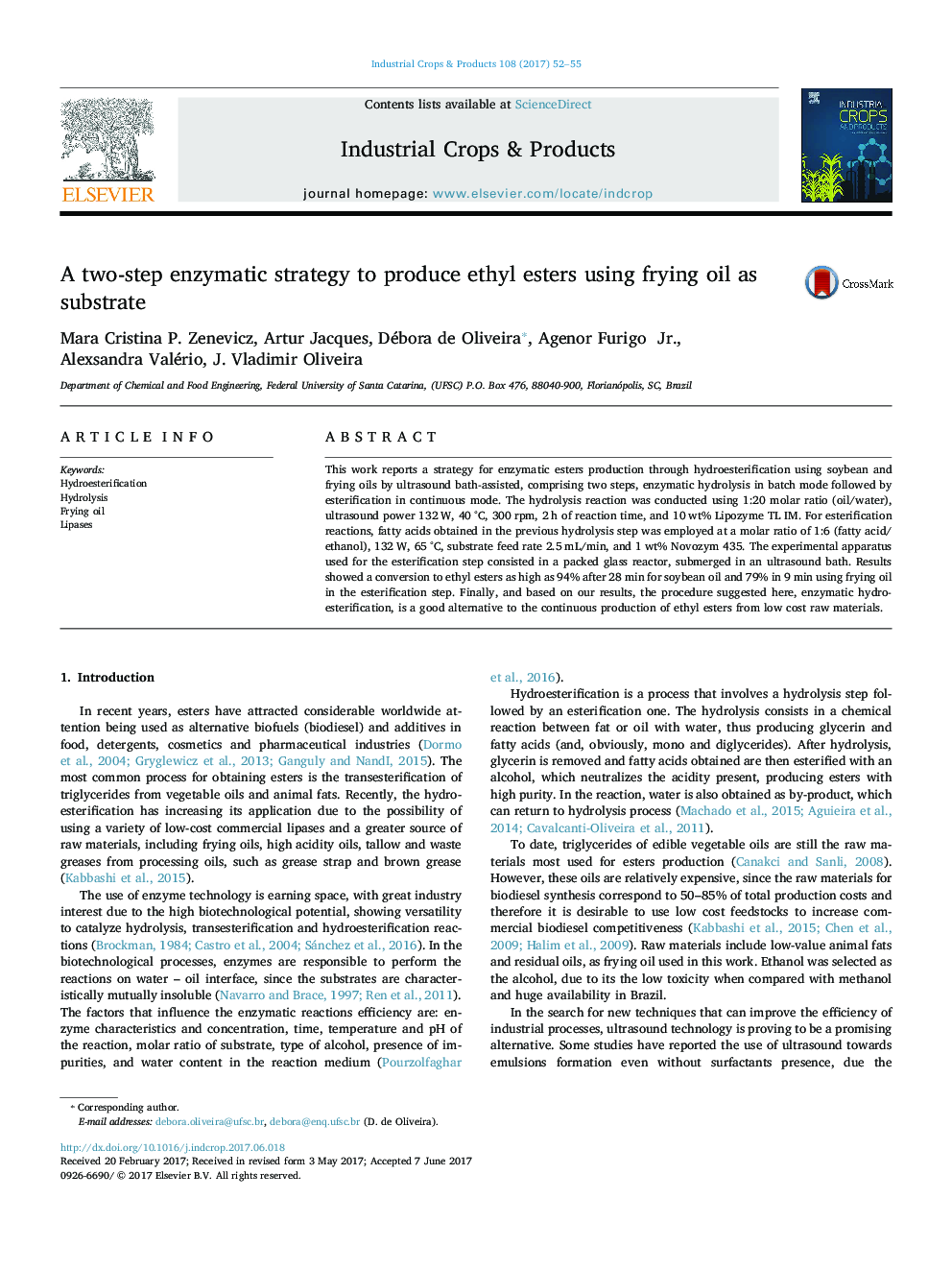| Article ID | Journal | Published Year | Pages | File Type |
|---|---|---|---|---|
| 5761853 | Industrial Crops and Products | 2017 | 4 Pages |
Abstract
This work reports a strategy for enzymatic esters production through hydroesterification using soybean and frying oils by ultrasound bath-assisted, comprising two steps, enzymatic hydrolysis in batch mode followed by esterification in continuous mode. The hydrolysis reaction was conducted using 1:20 molar ratio (oil/water), ultrasound power 132 W, 40 °C, 300 rpm, 2 h of reaction time, and 10 wt% Lipozyme TL IM. For esterification reactions, fatty acids obtained in the previous hydrolysis step was employed at a molar ratio of 1:6 (fatty acid/ethanol), 132 W, 65 °C, substrate feed rate 2.5 mL/min, and 1 wt% Novozym 435. The experimental apparatus used for the esterification step consisted in a packed glass reactor, submerged in an ultrasound bath. Results showed a conversion to ethyl esters as high as 94% after 28 min for soybean oil and 79% in 9 min using frying oil in the esterification step. Finally, and based on our results, the procedure suggested here, enzymatic hydroesterification, is a good alternative to the continuous production of ethyl esters from low cost raw materials.
Related Topics
Life Sciences
Agricultural and Biological Sciences
Agronomy and Crop Science
Authors
Mara Cristina P. Zenevicz, Artur Jacques, Débora de Oliveira, Agenor Jr., Alexsandra Valério, J. Vladimir Oliveira,
